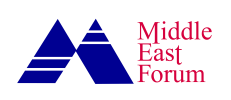Outside of Africa, Iran is among the most ethnically diverse nations in the world. Persians might be a plurality, but Iran is also home to Azeris, Kurds, Baluch, Arabs, Turkmens, Lurs, Gilakis, Armenians, and Assyrians, among others.
It is a mistake, however, to interpret ethnicity in Iran the same way as in the United States or Europe. In Iran, ethnicity is fluid, especially among larger ethnic groups like the Azeris who assimilate and inter-marry more.
As with most Middle Eastern countries, censuses are highly contentious and political. In practice, this leads to a lot of guesswork. Most analysts estimate the Azeris number between 14 million and 22 million, quite a margin of error. Some Israeli estimates that place the Azeri population at 30 million appear unhinged from reality.
There are three largely Azeri provinces in northwestern Iran: Ardebil, East Azerbaijan, and West Azerbaijan. Their combined population is about 8 million. About 5 million Azeris live in the greater Tehran area, making the group around 30 percent of the capital city. Smaller populations are scattered in other major cities.
This is where numbers become murky. Most Azeris moving to Tehran and other cities intermarry and assimilate into mainstream culture. Policy analysts outside Iran count their children and grandchildren as Azeris, even though they themselves would identify as “Iranian”—rather than “Persian.”
Most “Azeris” outside the northwest are mixed, fully assimilated, and identify as Iranian.
My closest friend is one case. His father and uncles moved to Tehran and married ethnic Persians. My friend understands some Azeri language, but he identifies as Iranian and has an attachment to ancient Persian grandeur. His nephews all have Persian names that harken to Iran’s ancient pride. Politically, he is a monarchist and Iranian nationalist, and after two drinks he probably would support the death penalty for anyone who talks of separatism. Though his politics are extreme, he signifies something nonetheless: Most “Azeris” outside the northwest are mixed, fully assimilated, and identify as Iranian. The “one drop” racial classification popular in the United States a century ago does not apply to Iran, even as proponents of Azeri separatism in Washington think tanks surreptitiously embrace it.
There are other Azeris who also signify such assimilation. Supreme Leader Ali Khamenei is an ethnic Azeri. Those who bemoan the struggles of Azeris in Iran often forget the supreme oppressor is Azeri himself.
Even within the northwest, Azeris are a mixed bag.
Soccer is among the best explainers of Iranian society. It is the one national good to which people cling because the state has not fully co-opted it. Ali Daei is the greatest player in Iran’s history. He captained the national team and, until recently, held the world record for most international goals; Daei is an Azeri from Ardebil.
In the 1990s, when the Islamic Republic still held some legitimacy, people still embraced its national anthem. Daei was the first major player to put his hand over his heart and sing along, not because of political or financial incentives but due to patriotism. Ironically, on January 1, 2025, the regime banned him from a reunion game because he stopped singing the anthem in solidarity with the anti-regime protesters. Relatedly, the Azeris who performatively call themselves pan-Turkic reveal their actual allegiances at national team games when they support Iran during matches with Azerbaijan or Turkey.
In the three Azeri provinces, many Azeris prefer Persian names over Arabic names rooted in Shi’ism.
Champions of Iranian minorities cite the restrictions on naming children as an ethnic grievance, but the story is more complicated. After the 1979 revolution, the regime banned all non-Arabic names. An adolescent friend called himself by the Persian name Baya even though his official name was Ehsan, which is Arabic. Such dualities exist among the children born during the first decade of the regime. The sheer size of the Persian community has forced a loosening of restrictions on names; smaller minorities like the Azeris and Kurds do not have the size yet to force the government to overturn the rule. Given names reveal the complexities of Azeris more than proving ethnic oppression. In the three Azeri provinces, many Azeris prefer Persian names over Arabic names rooted in Shi’ism.
Living in one of the world’s worst tyrannies, every Iranian looks for some form of leverage against the Islamic Republic, but this does not mean abandoning Iranian identity. Often, outside analysts also misconstrue separatist chants, such as a banner reading “South Azerbaijan Isn’t Iran” unveiled at a Tabriz soccer game. The regime often tolerates these, if not encourages some, to have a boogeyman to legitimize the regime as the protector of Iranian nationalism. Coverage of U.S., Israeli, and Azerbaijani support for secession regularly features on state media. Consider how police used facial recognition to arrest those seen dancing in a public park in a viral video, but did not make arrests in Tabriz even though the Islamic Republic considers separatism a matter of state security.
This is not to diminish the struggles of minorities. Perhaps there is a parallel to Ukraine, where many Russian speakers in eastern Ukraine rallied toward Kyiv rather than Moscow, despite the assumptions of the Kremlin and many American academics and analysts trained in Russia. The Islamic Republic has many vices, but exclusionary Iranian nationalism is not one of them. Encouragements of separatism undermine this objective by playing into the Islamic Republic’s hands.






